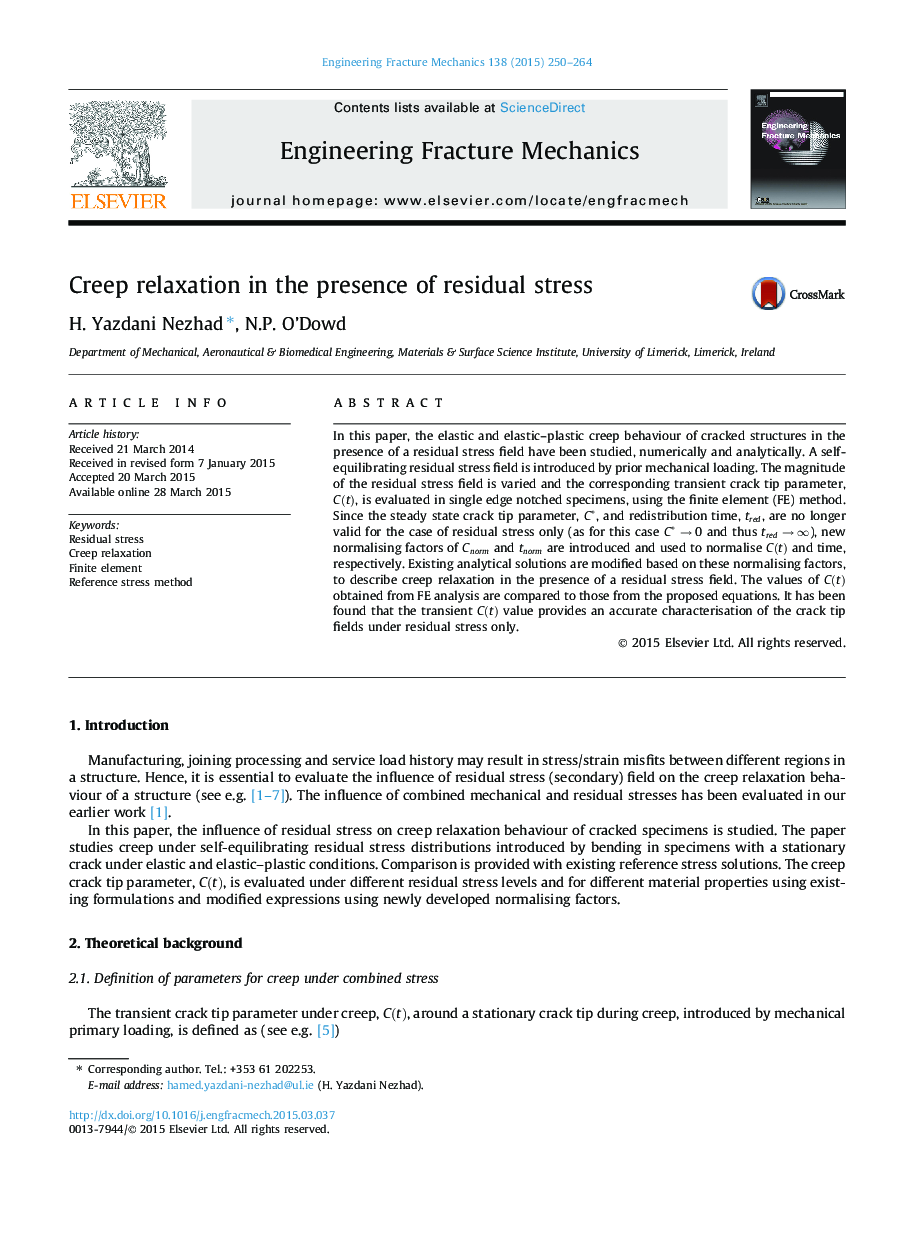| Article ID | Journal | Published Year | Pages | File Type |
|---|---|---|---|---|
| 770263 | Engineering Fracture Mechanics | 2015 | 15 Pages |
•We study the creep behaviour of cracked structures in the presence of residual stress.•Transient creep crack tip parameter, C(t)C(t), are evaluated using FE analysis.•Normalising factors are developed to present the creep curves.•Existing analytical solutions are modified based on these normalising factors.•The results are compared in terms of conservative or non-conservative predictions.
In this paper, the elastic and elastic–plastic creep behaviour of cracked structures in the presence of a residual stress field have been studied, numerically and analytically. A self-equilibrating residual stress field is introduced by prior mechanical loading. The magnitude of the residual stress field is varied and the corresponding transient crack tip parameter, C(t)C(t), is evaluated in single edge notched specimens, using the finite element (FE) method. Since the steady state crack tip parameter, C∗C∗, and redistribution time, tredtred, are no longer valid for the case of residual stress only (as for this case C∗→0C∗→0 and thus tred→∞tred→∞), new normalising factors of CnormCnorm and tnormtnorm are introduced and used to normalise C(t)C(t) and time, respectively. Existing analytical solutions are modified based on these normalising factors, to describe creep relaxation in the presence of a residual stress field. The values of C(t)C(t) obtained from FE analysis are compared to those from the proposed equations. It has been found that the transient C(t)C(t) value provides an accurate characterisation of the crack tip fields under residual stress only.
